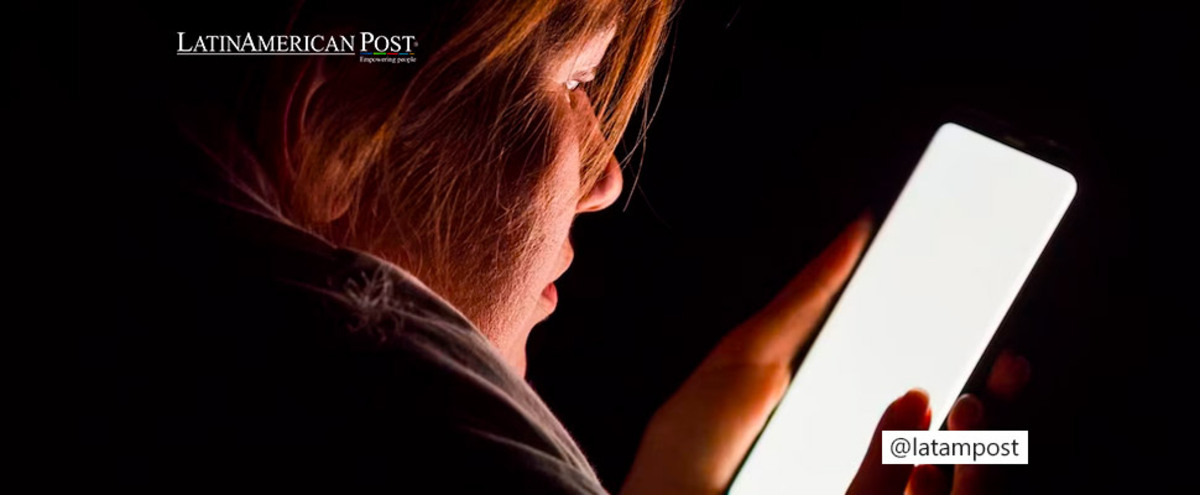This is How Blue Light from Mobile Devices Affects your Health
Spending much of the day with our eyes on mobile devices can have negative consequences, especially for our visual health. We tell you what to do to mitigate the inconvenience of blue light.

Photo: Freepik
LatinAmerican Post | Erika Benitez
Listen to this article
Leer en español: Así afecta la luz azul de los dispositivos móviles a tu salud
Today, it is a fact that we are spending more and more time exposed to blue light from mobile devices such as tablets, smartphones, and computers. While sunlight is necessary for life and has beneficial effects such as regulating biological rhythms or hormonal balance, prolonged exposure to artificial light increases health concerns.
The number of studies revealing evidence indicating that we should control the time connected to a screen has increased over the last few years, fundamentally due to the boom in technology adoption, especially in the younger population.
What is Blue Light?
When talking about blue light, it is essential to specify that it is within visible light. Visible light corresponds to electromagnetic emissions within the wavelength range between 280 and 780 nanometers. In other words, the visible light spectrum is what the human eye can perceive and translate into the colors we recognize.
We can receive this light mainly naturally from sunlight, which is essential for regulating the human body's circadian rhythm. However, it can also be found in artificial sources, such as LED lights, TV screens, computers, tablets, cell phones, and mobile devices. In other words, we are exposed through many pathways to blue light and not only to that provided by natural sources.
According to Harvard Medical School, the waves emitted by blue light during the day are beneficial. They help, for example, to increase attention to reactive stimuli and regulate people's moods, but at night they become detrimental to health, especially when abused.
The consequences of blue light on human health are still under study. For the moment, the main conclusion is that, in general, it is harmful if we are exposed to it intensely and for long periods.
Negative Effects of Exposure to Blue Light
One of the main effects for those exposed to higher amounts of blue light is the disruption of regular sleep cycles. According to a study by Harvard researchers, in which they conducted a comparative experiment of the effects of 6.5 hours of exposure to blue and green light, blue light suppressed melatonin in about twice as much time as a green light and caused twice as many disruptions in circadian rhythm.
"Light at night is part of the reason many people don't get enough sleep," says Harvard sleep researcher Stephen Lockley. Likewise, the publication points out that lack of sleep may be linked to an increased risk of depression, diabetes, and cardiovascular problems.
On the other hand, a a recent scientific study from Oregon State University in the United States identified a new problem: excessive exposure to blue light from artificial sources can also have detrimental effects on a wide range of cells in our body, from skin and fat cells to sensory neurons. The study is quite peculiar, as it was done with a species of fly that shares with humans the basic structure of its cells, so measuring the effect of light on its cellular mechanisms could resemble how it would affect a human. The researchers observed that this light affected the production and regeneration of mitochondria, especially in older flies. This means that our body's natural rhythms of hormone production and cell regeneration are more concerned in older people.
Read also: WHO Advises Against the use of Sweeteners and Warns About its Risks
Finally, other studies point out that high exposure to blue light can cause eye problems, such as dry eyes, tiredness, or eye fatigue, since people spend a lot of time without blinking and without looking away from the screens.
How Can you Protect Yourself From the Effects of Mobile devices' Blue Light?
One of the main recommendations of experts when carrying out any activity in front of a computer, tablet, or mobile device is to take constant breaks to look into the distance. In this regard, the American Academy of Ophthalmology developed a critical rule to implement to avoid eyestrain. The "20/20/20" rule: consists of taking breaks every 20 minutes for 20 seconds and looking at a distant object at least 20 feet away.
You can also consider wearing glasses that block blue light and remember to keep your eyes hydrated. Likewise, avoiding exposure to screens one or two hours before sleep is essential to avoid unbalancing the "biological clock." However, given the technological dependence today, it is one of the recommendations that is least complied with. Experts recommend adjusting the brightness and contrast on devices and activating the night or dark mode to reduce the intensity of the light. Another increasingly popular alternative is the use of dim red lights at night, as this light is less likely to alter the circadian rhythm and suppress melatonin levels, which can affect sleep quality.




